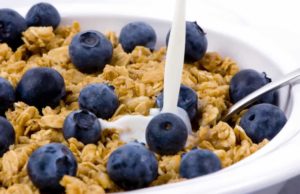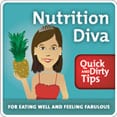Most of my readers are pretty savvy about nutrition. They read a lot on the topic, seek advice from reliable sources, stay on top of the latest developments, and think carefully about their food choices. But over the years, I’ve noticed a few traps that even health-conscious people often fall into. One of the most common mistakes is to assume that foods are good for you simply because they’re all-natural.
This article is also available as a podcast. Click to listen.
I think it’s especially easy to fall into this trap when shopping at health or natural food stores. Everything you see is the healthiest possible version of itself. The sodas are sweetened with organic cane sugar instead of high fructose corn syrup. The potato chips are made with olive oil and air-dried Celtic sea salt. The ice cream is made from rBST-free cream. The jelly beans are colored with all-natural dyes. That’s all very well and good, but at the end of the day you still have a cart full of soda, potato chips, ice cream, and jelly beans.
It’s just as easy—and damaging—to over-consume natural sugar as it is to overdo it with refined sugar. And frying a potato in olive oil and sprinkling it with sea salt doesn’t turn it into a health food any more than coloring a jelly bean with beet extract turns it into a nutritious choice. I know that sounds ridiculously obvious. But you would be amazed how easy it is—even for nutrition-savvy people—to get distracted by the so-called “health halo.”
Keep Your Eye on the Ball
Just like the magician who does something eye-catching with his right hand so that you don’t notice what he’s doing with his left, marketers can often get you to forget what you know about nutrition by focusing your attention elsewhere.
If I asked you whether organic foods are lower in calories than non-organic foods, for example, most of you would answer—correctly—that being organic has absolutely no bearing on a foods’ caloric value. But if I showed you a plate of food, described the preparation, and asked you to estimate how many calories it contained, you’ll probably give me a lower estimate if I include the word “organic” or “natural” in my description.
Do Organic Foods Really Taste Better?
This phenomenon has been documented over and over again. A couple of years ago, John Tierney of The New York Times found that people estimated the calories for a meal as being 200 calories lower when it was accompanied by a packet of crackers labeled “trans-fat free.” More recently, researchers from Cornell University asked people to compare organic and conventional versions of the same cookie. In reality, the cookies were identical but people estimated that the faux-organic brand was lower in fat and higher in fiber. Even so, people rated them as better-tasting!
Barron’s Dictionary of Marketing Terms explains it this way:
“In theory, an individual should be able to evaluate each feature of a given brand independently and should have no difficulty giving a high rating to one feature while giving another a low rating. However, in practice, researchers have noticed that respondents have a tendency to give a high rating to all the brand’s features if they like the brand, and a low rating to all the features if they do not like the brand. This is known as a halo effect.”
Be On Guard Against the Health Halo
There are a lot of good reasons to choose foods that are less-processed and more natural. You can reduce your exposure to pesticides by choosing organic foods, for example. Just don’t fall into the trap of assuming that a food is more nutritious (or less damaging) just because it’s natural. And don’t let food marketers get away with the old magician’s distraction trick.
Hold organic and all-natural products to the same standard you’d apply to conventional goods. Check the nutrition facts label to see how the calories, fat, sodium, and sugars add up. Organic or not, make sure that fresh fruits, vegetables, and other whole or minimally processed foods are taking up most of the space in your cart and that chips, crackers, cookies, and other treats are in the minority.
See also: Nutrition Trap: Quality vs.Quantity
This article was originally published on QuickandDirtytips.com


